Introduction
In the realm of software development, the pursuit of quality and reliability hinges on one crucial metric: code coverage. This powerful indicator reflects the extent to which a program's source code is tested, serving as a beacon for developers striving to identify vulnerabilities and enhance performance. With the increasing reliance on automated testing and continuous integration practices, understanding the nuances of code coverage has never been more vital.
As organizations seek to streamline their workflows and elevate product quality, innovative tools like Kodezi emerge as game-changers, empowering teams to catch bugs early and improve code integrity. This article delves into the significance of code coverage, the tools available for its measurement, and the transformative benefits it brings to software development, ultimately paving the way for superior products and satisfied users.
Defining Code Coverage: What It Is and Why It Matters
Program execution is an essential metric in software development, assessing the degree to which a program's source is run during evaluation. Represented as a percentage, this metric serves as a key indicator of the thoroughness and effectiveness of the testing process. Extensive testing reveals that a substantial segment of the software is assessed, aiding in the prompt identification of flaws and weaknesses.
In Agile practices, where 95% of companies utilize test automation, achieving high coverage of the program is paramount. Kodezi's AI improves automated evaluation within your application development lifecycle, ensuring that issues are identified before they proliferate, thereby enhancing quality with each release. Additionally, the integration of Kodezi CLI allows teams to autonomously enhance their codebases and rectify bugs before they reach production, showcasing how automated builds and testing can significantly bolster reliability in development.
Moreover, CI/CD pipelines, utilized by 82% of Agile teams, emphasize the crucial role of extensive testing in achieving quality benchmarks. For developers committed to providing exceptional software quality, grasping and applying extensive test metrics is essential. It emphasizes the importance of thorough evaluation to create software that is functional, secure, and dependable. This focus on stringent testing measures such as program evaluation is increasingly acknowledged as vital for success in the sector.
Moreover, studies indicate that diverse teams of testers, particularly those with a significant proportion holding advanced degrees, are better positioned to leverage these metrics effectively. This variety not only boosts the ability to attain extensive test completeness but also aids in enhanced program quality. As education relates to salary potential, it emphasizes the importance of expertise in providing high-quality applications through careful evaluation practices, further enhanced by Kodezi's innovative tools created specifically for B2B engineering teams.
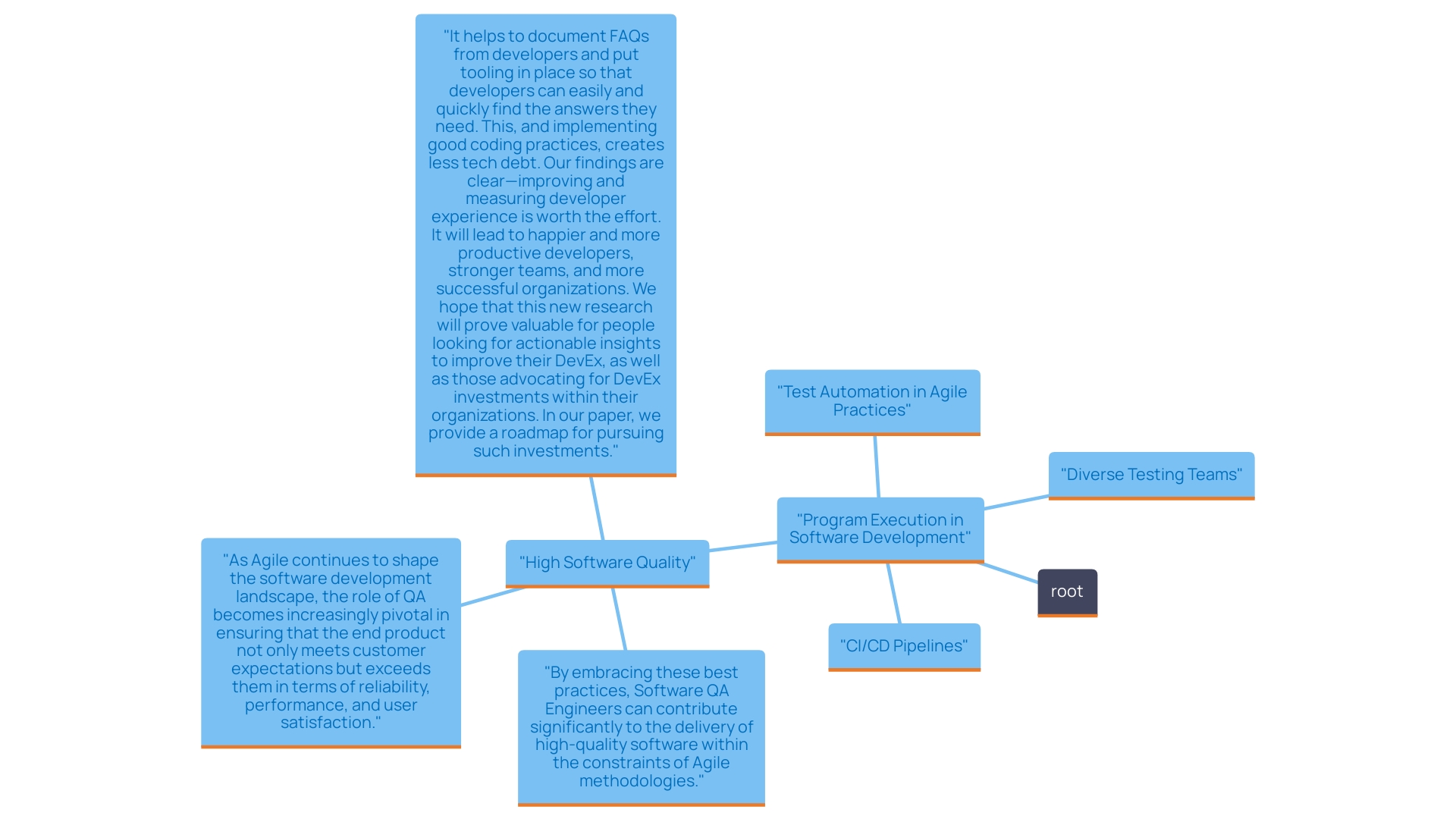
Calculating Code Coverage: Tools and Techniques for Measurement
Assessing program testing is vital for guaranteeing high-quality software development. Tools like JaCoCo for Java, Istanbul for JavaScript, and Coverage.py for Python stand out due to their ability to generate detailed reports on the percentage of statements executed during testing. Each tool offers unique advantages:
- JaCoCo is known for its robust integration with Java projects.
- Istanbul excels in providing comprehensive metrics for JavaScript applications.
- Coverage.py is praised for its simplicity and effectiveness in Python environments.
By analyzing line metrics, branch metrics, and function metrics, teams can effectively pinpoint untested areas and enhance overall software quality.
For instance, Codacy, an automated review tool, supports over 30 programming languages and offers both free open-source and enterprise versions. This versatility makes it a valuable addition to any development process. In a similar manner, Devel::Cover offers Perl metrics for assessing program testing, aiding in enhancing overall quality by pinpointing untested sections.
Case studies further illustrate the practical applications of these tools. Grcov compiles information on testing results from multiple source files and supports various file formats. Its compatibility with various operating systems assists developers in examining program performance thoroughly.
Experts highlight the significance of incorporating these tools into the development process, enabling ongoing evaluation of program quality. This promotes informed decision-making concerning areas that need further evaluation, ultimately resulting in more dependable and resilient applications.
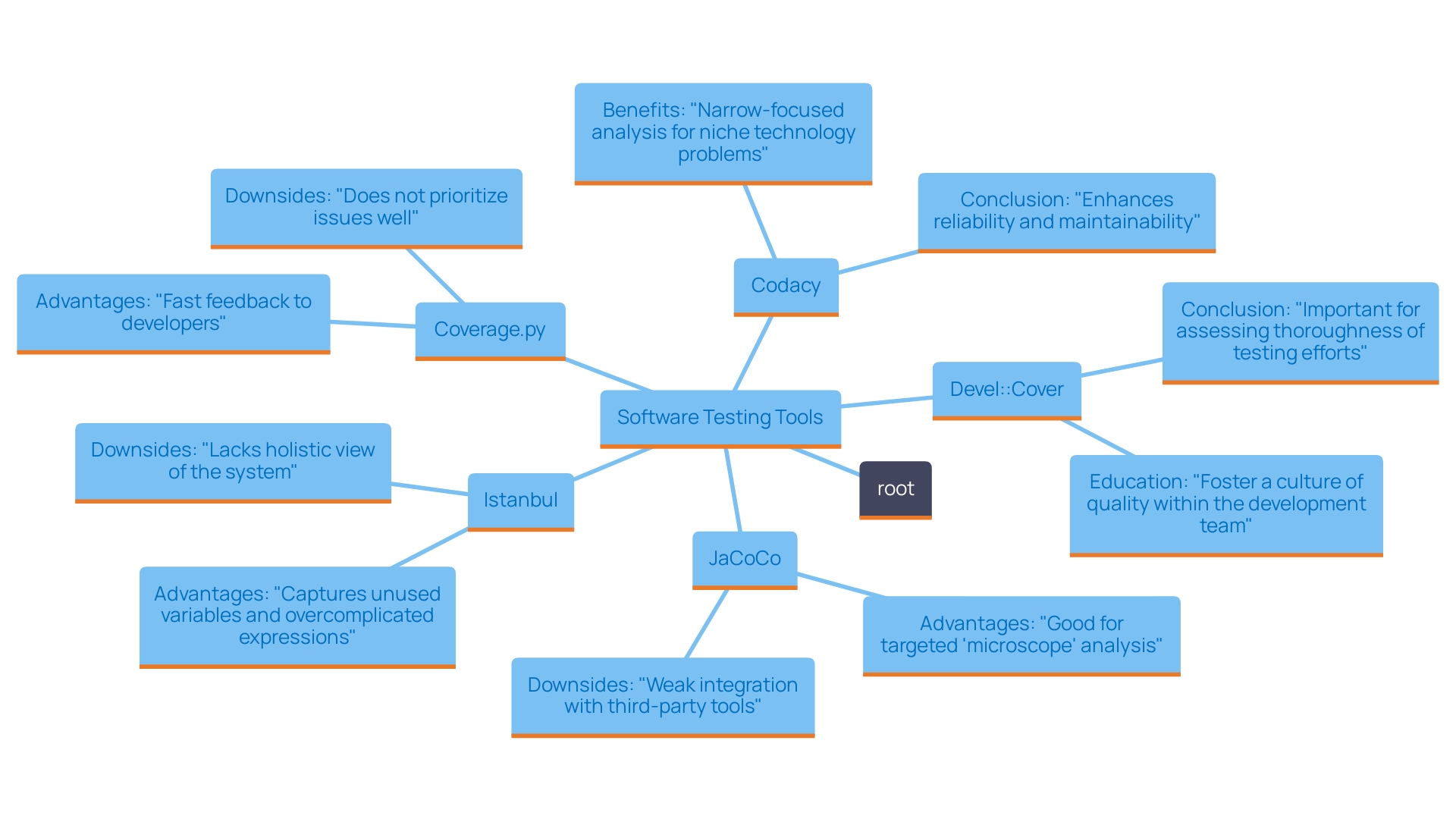
The Benefits of Code Coverage: Enhancing Software Quality
Sustaining high testing standards is crucial for numerous reasons, mainly its function in improving software dependability and reducing debugging duration. Thorough testing ensures that the software operates as anticipated, thus reducing the risk of defects reaching production. This reliability is critical, especially considering that:
- 84% of development teams conduct regular security audits
- Nearly 89% have dedicated security personnel, according to a 2024 industry report
Recent statistics indicate that teams with high test coverage report a 30% decrease in post-release defects, emphasizing its significance.
Moreover, tools like Kodezi can significantly enhance productivity by automating correction and bug analysis across 30+ programming languages. For instance, when a developer encounters a syntax error, Kodezi not only highlights the error but also suggests a corrected version of the script and explains the reason behind the correction. This functionality allows developers to learn from their mistakes and improve their coding skills over time. With Kodezi, developers can streamline their workflows, thus simplifying maintenance and refactoring processes. It helps reduce duplication, adhering to the DRY (Don't Repeat Yourself) principle, thereby lowering maintenance efforts and enhancing overall efficiency. Well-documented tests serve as a roadmap for future modifications, fostering better collaboration among team members.
An engaging case study demonstrates the difference between testing extent and test quality: a team that attained 90% testing extent still encountered unforeseen behaviors during deployment because of inadequate test scenarios. This emphasizes that extensive testing alone doesn't ensure robustness; it is essential to embrace a balanced strategy that aims for both strong testing and effective assessments.
In summary, investing in extensive testing not only enhances software reliability but also streamlines development processes, making it a crucial strategy for teams dedicated to delivering top-tier software products. Kodezi, with its AI-powered capabilities, is an invaluable tool for achieving this objective.
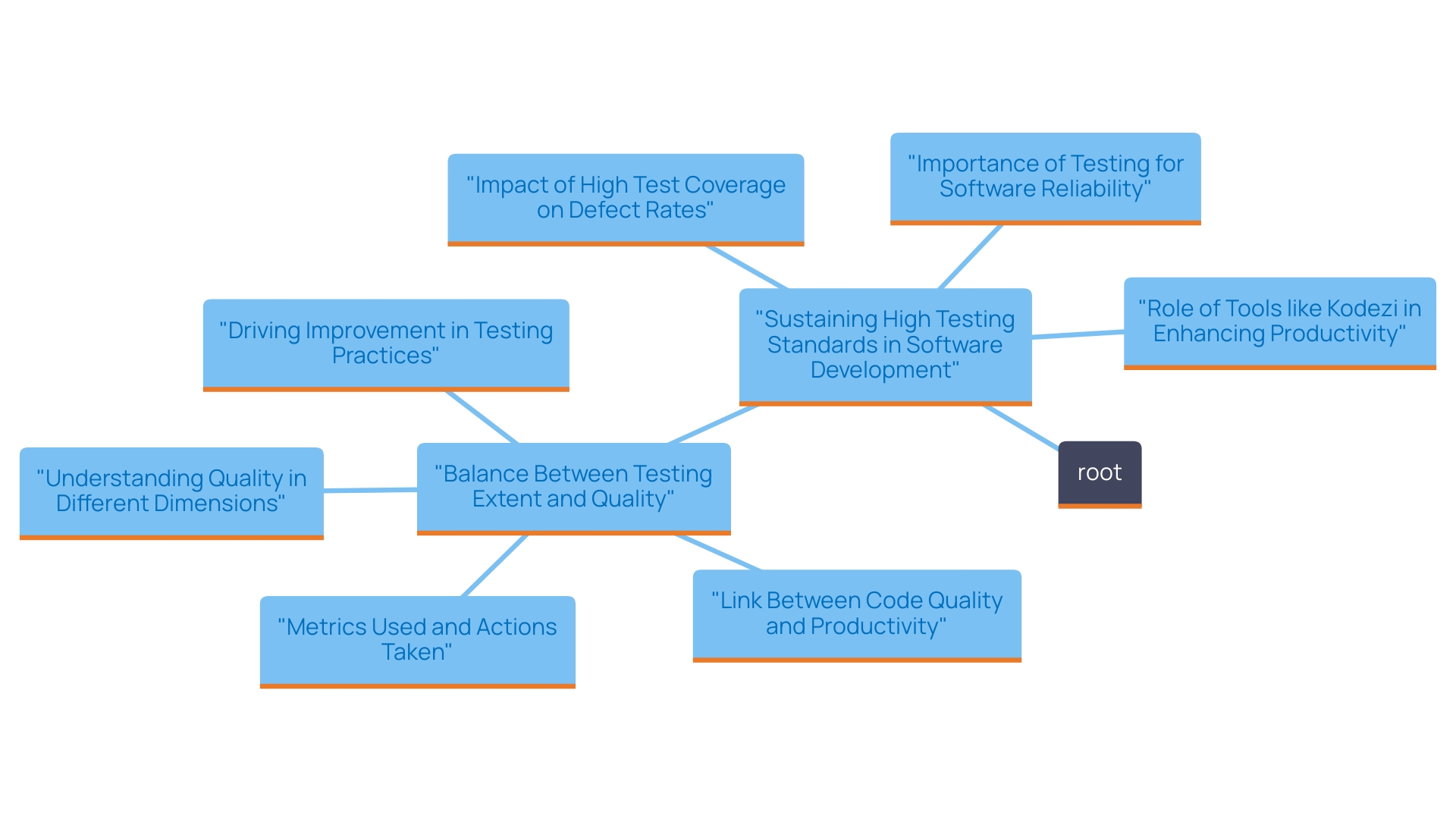
What Code Coverage Is Not: Debunking Common Myths
Despite its usefulness, software testing metrics are often misunderstood and surrounded by myths. One common misunderstanding is that extensive testing assurance guarantees high-quality software. However, test assessment only evaluates the amount of script examined, not the standard of the evaluations themselves. For example, a development project could attain complete implementation assessment with tests that are poorly designed and do not effectively evaluate the performance of the program. A notable example is a project where automation tests cover every line of programming but do not check for edge cases or business logic, leading to critical bugs in production.
Anton Hendricks, a highly respected specialist in the field, highlights, 'It is widely accepted in the industry that each development project should strive for a percentage of between 60% and 90% in testing adequacy.' This range is recommended due to the flexible nature of software projects, where the business importance and complexity can significantly vary. Recent discussions in the field also emphasize the shortcomings of program assessment metrics, indicating that depending entirely on these measures can foster a deceptive feeling of safety. Critical issues can still exist in code areas that aren't exercised during evaluation.
A case study titled 'Conclusion on Code Percentages' illustrates that there is no universal 'perfect' percentage applicable to all projects. It promotes a flexible method, suggesting a target range of 60% to 90%, while highlighting the necessity for strong evaluation infrastructure. Consequently, although testing metrics are a useful tool, they should be employed alongside other testing methods, such as exploratory testing and reviews, to guarantee thorough quality and reliability.
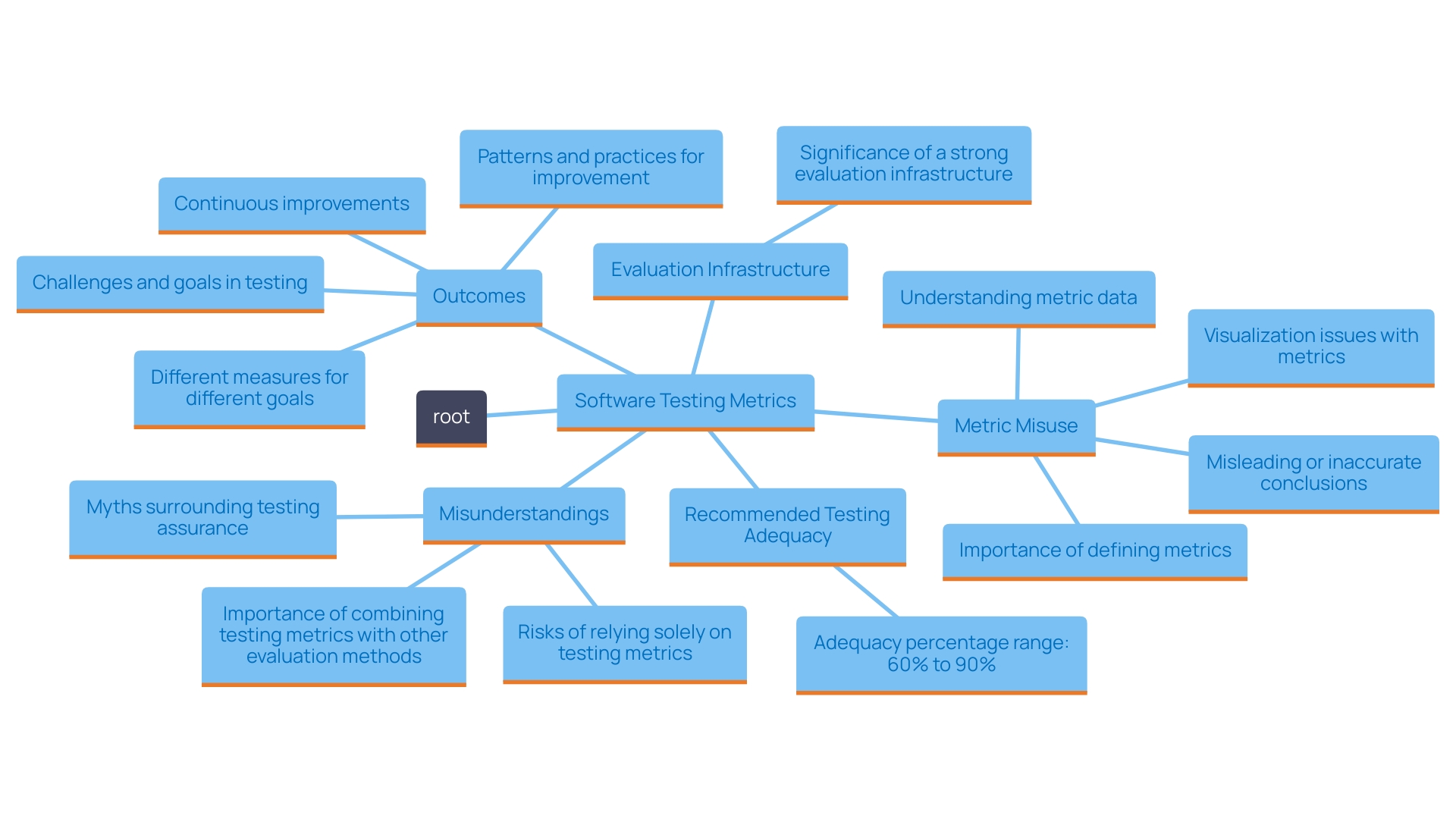
Integrating Code Coverage into Your Development Workflow
Incorporating testing metrics into the development workflow can be transformative when combined with continuous integration (CI) practices. Establishing CI pipelines to execute automated tests and produce performance reports with each commit allows teams to monitor quality trends efficiently. Recent studies indicate that teams employing automated evaluations have noticed a 30% rise in metrics related to software quality, greatly minimizing post-release flaws due to enhanced assessment protocols. This continuous monitoring helps maintain high-quality standards and minimizes post-release defects.
A prime example of enhancing evaluation capabilities is Horizon 3.ai's release of NodeZero Kubernetes Pentesting, which strengthens security assessments in Kubernetes environments. This advancement highlights the essential role of automated testing in attaining thorough program evaluation and ensuring strong application security.
In 2023, Kodezi launched its CLI, enabling professionals to integrate Kodezi into their CI/CD pipelines and utilize its features locally. This includes support for over 30 programming languages and compatibility with Visual Studio Code. Users can easily get started with Kodezi through comprehensive documentation available online, which guides teams in enhancing their coding practices effectively.
Industry leaders advocate for these practices, emphasizing that promoting standards in CI, securing the software supply chain, and ensuring interoperability are essential for organizational efficiency. Insights from the CD Foundation reflect the industry's best practices and provide a concrete framework for organizations to compare their programming practices with their peers, highlighting areas that require attention to enhance overall efficiency.
Setting distinct objectives for software testing and highlighting its significance through reviews can promote a culture of quality within the team. By making code coverage an integral part of the development process and leveraging Kodezi's features, teams can significantly enhance software quality and reduce the likelihood of defects. This ultimately leads to more robust and reliable applications. Get started for free or schedule a demo to see how Kodezi can improve your coding practices.
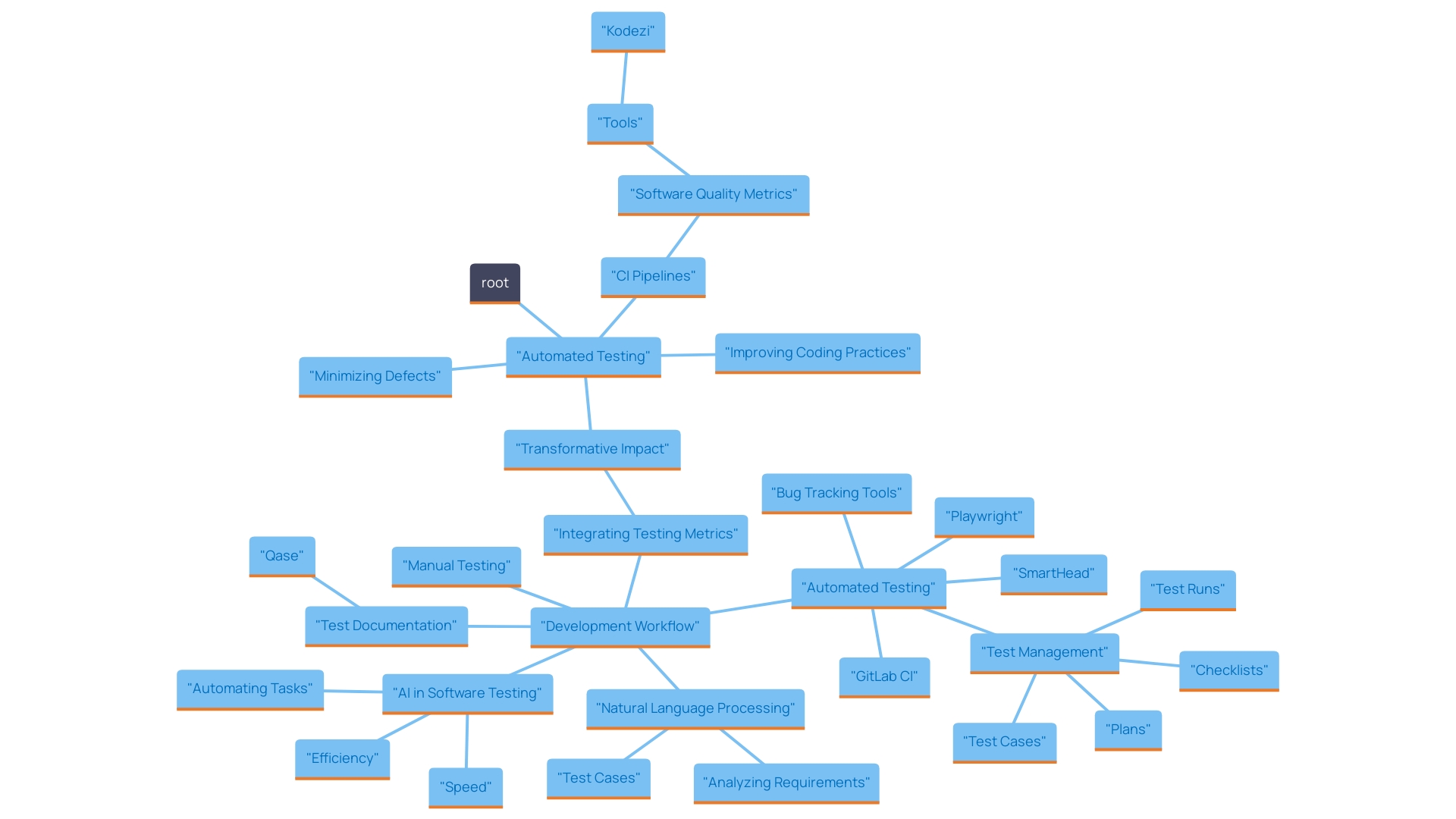
Conclusion
Achieving high code coverage is essential for software development, serving as a key indicator of testing effectiveness and code quality. By measuring the extent to which code is executed during testing, teams can identify vulnerabilities and address issues before they reach production. The integration of tools like Kodezi into the development workflow not only enhances automated testing but also empowers teams to maintain high standards of reliability and performance.
The benefits of code coverage extend beyond mere metrics; they translate into tangible improvements in software quality and efficiency. With studies showing that high code coverage can lead to a significant reduction in post-release defects, it becomes clear that investing in comprehensive testing practices is a strategic necessity. Kodezi's innovative features streamline the coding process, allowing developers to focus on creating robust applications while minimizing bugs and errors.
Moreover, understanding the limitations of code coverage metrics ensures that teams adopt a balanced approach, combining quantitative measures with qualitative assessments for thorough testing. As organizations increasingly embrace continuous integration practices, integrating code coverage into the development lifecycle becomes a pivotal strategy for fostering a culture of quality. By prioritizing these practices, teams not only enhance their software products but also pave the way for greater user satisfaction and trust in their solutions.
Frequently Asked Questions
What is program execution in software development?
Program execution is a metric that assesses the extent to which a program's source code is run during evaluation, represented as a percentage. It indicates the thoroughness and effectiveness of the testing process.
Why is achieving high program coverage important in Agile practices?
High program coverage is crucial in Agile practices, where 95% of companies utilize test automation, as it helps identify issues early and enhances the quality of each software release.
How does Kodezi's AI contribute to program evaluation?
Kodezi's AI improves automated evaluation in the application development lifecycle, ensuring that issues are identified before they proliferate, thus enhancing software quality.
What role do CI/CD pipelines play in software testing?
CI/CD pipelines, used by 82% of Agile teams, emphasize extensive testing as essential for achieving quality benchmarks, ensuring that software is functional, secure, and dependable.
How does team diversity impact software testing metrics?
Diverse teams of testers, particularly those with advanced degrees, can leverage testing metrics more effectively, leading to improved test completeness and overall program quality.
What tools are recommended for assessing program testing?
Tools like JaCoCo for Java, Istanbul for JavaScript, and Coverage.py for Python are recommended for generating detailed reports on the percentage of statements executed during testing.
What is the significance of sustaining high testing standards?
Sustaining high testing standards is vital for improving software reliability and reducing debugging time, ensuring that the software operates as expected and minimizing the risk of defects.
How does Kodezi enhance developer productivity?
Kodezi automates correction and bug analysis across multiple programming languages, helping developers learn from mistakes and streamline their workflows.
What is a common misunderstanding about testing metrics?
A common misunderstanding is that extensive testing guarantees high-quality software. However, metrics only assess the amount of code tested, not the quality of the tests themselves.
What is the recommended percentage range for testing adequacy?
The recommended testing adequacy percentage range is between 60% and 90%, as flexibility is needed based on the business importance and complexity of software projects.
How can continuous integration (CI) practices transform software testing?
Incorporating testing metrics into CI practices allows teams to execute automated tests and produce performance reports with each commit, leading to improved quality trends and reduced post-release defects.
What features does Kodezi CLI offer for developers?
Kodezi CLI enables integration into CI/CD pipelines, supports over 30 programming languages, and is compatible with Visual Studio Code, enhancing coding practices through comprehensive documentation.




